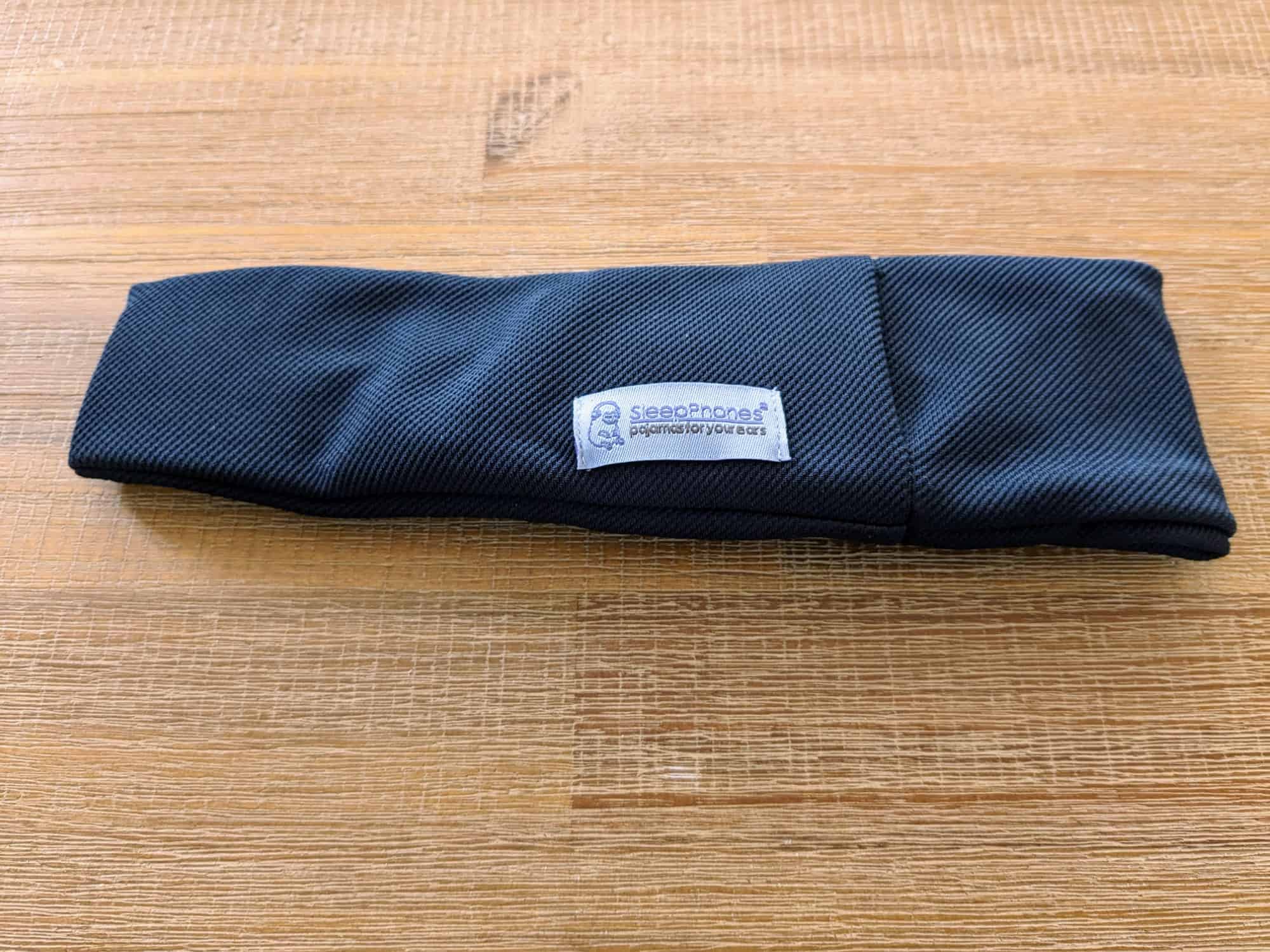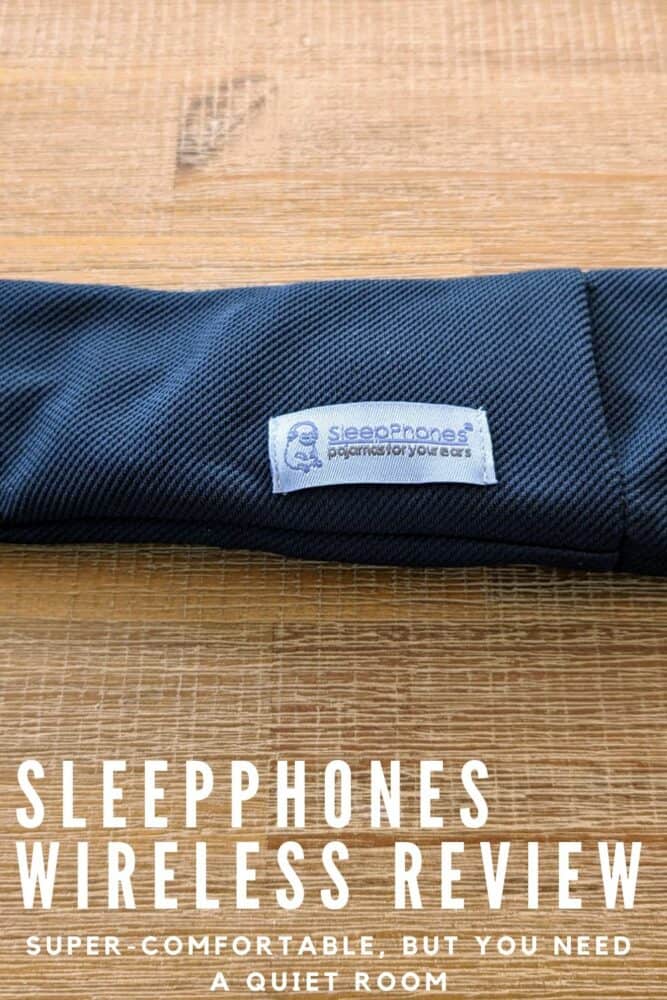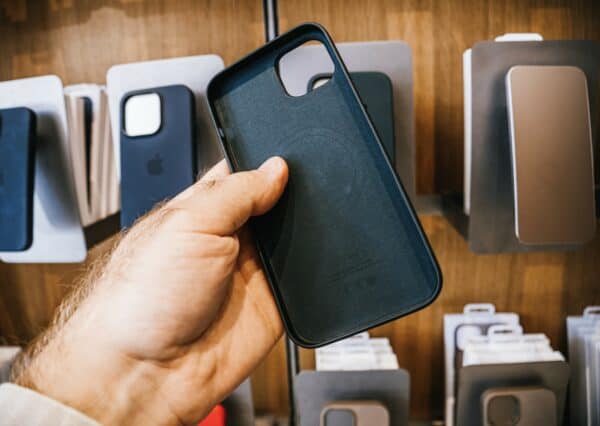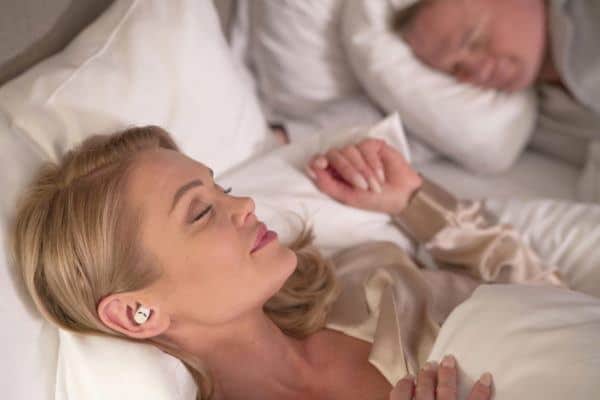SleepPhones Wireless Review: Side Sleepers Rejoice
We may earn a commission from purchases you make after clicking links on this site. Learn more.SleepPhones sleep headbands have been part of my life for a surprisingly long time. I reviewed the wired version many years ago, before passing it onto my girlfriend. She liked it so much that she kept buying replacements every time she left them behind in a hotel room or broke the cable after it strangled her in her sleep. Both happened more often than you might imagine.
In the years since that review, though, I’ve tested over a dozen other types of sleep-focused earbuds and headphones. Some have been very good at helping me drift off at night, others definitely haven’t, but one thing’s for sure: there are a lot more options than there used to be.
The company behind SleepPhones hasn’t stood still, of course. The fabrics and headband design have changed since it first came out, as has the connection method: while there’s still a model that uses a cable, there’s now a Bluetooth version as well.
Wireless is very much the way to go with anything you wear to bed as far as I’m concerned, but with so many alternatives now, I really wondered whether a sleep headband still holds up these days. There was only one way to find out.
Design and Box Contents
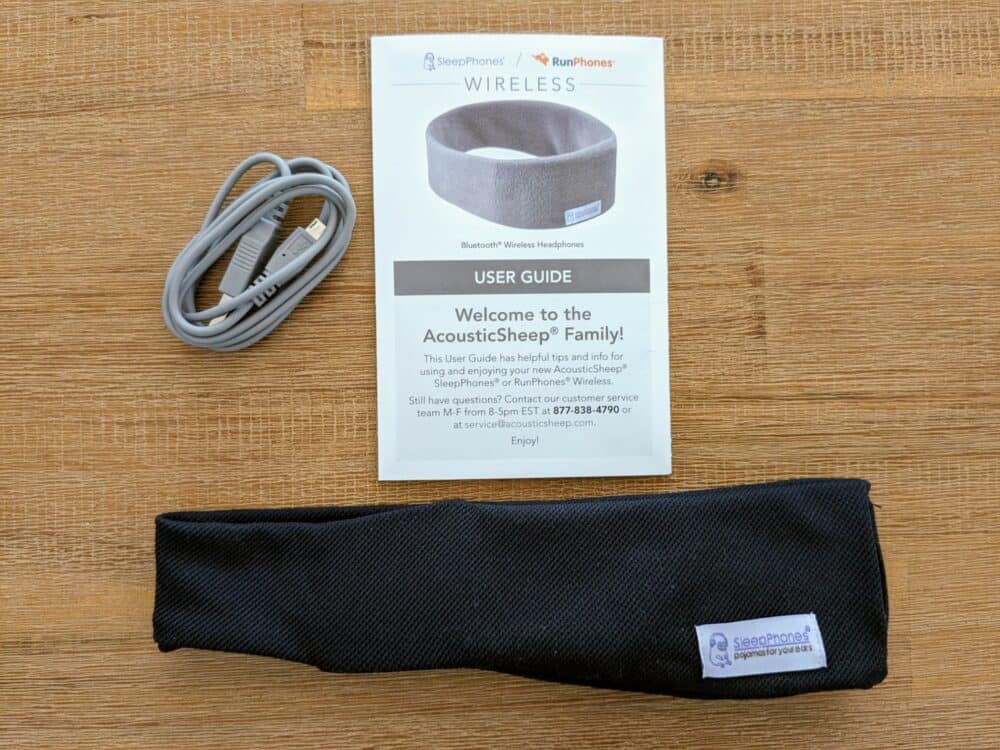
The SleepPhones arrived in a small box adorned with a photo of a couple happily sleeping in a pair of matching headbands. How lovely. Mine was the medium size in black, made from the company’s SleepCloud polyester/spandex fabric.
That’s the breathable version that the company recommends for warmer rooms and climates. There’s also a warmer fleecy fabric option, which I’ve used with the wired model in the past. Each fabric has three different color options, with small, medium, and large varieties of each. No shortage of choices, then.
Other than that, there’s not much else to talk about, just a USB-A to micro-USB charging cable and a basic instruction booklet with details on pairing, wearing, using, and washing the headband. It’s not a complicated piece of technology, I guess.
The headband has an opening near the logo, secured with a strip of Velcro. Inside sits the slim rubber Bluetooth module, with a pair of flat speakers attached by thin wire to the charging/power socket. The module unplugs from the speakers for recharging, or you can remove all of the electronics when it’s time to drop the band in the washing machine.
Speaking of the module, it’s a simple affair, with just three buttons. The middle button is for pairing, power, and starting/stopping playback, while the buttons on either side control volume and track skipping.
Pairing and Connection
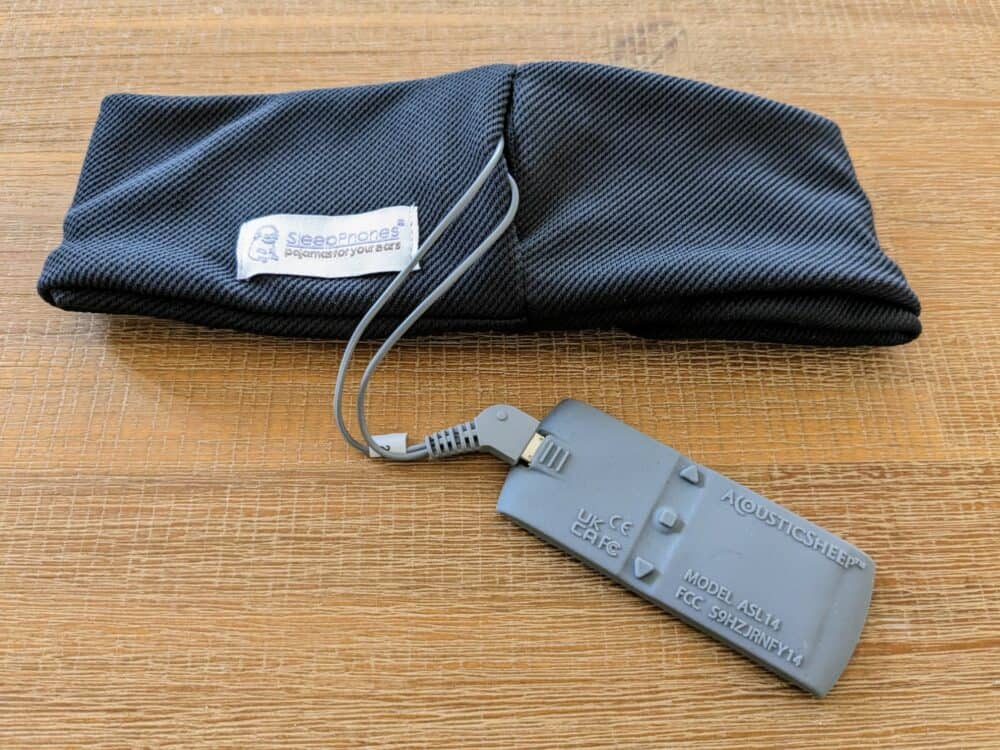
The SleepPhones went into pairing mode as soon as I turned them on by holding the power button down for five seconds. A disembodied voice says “power on” followed by “Bluetooth pairing”, but if you’re not wearing the headband at the time to hear the voice, a blinking red light also lets you know.
The instructions suggest it can take up to thirty seconds for pairing to complete, but it took about three seconds on my usual phone before that same voice calmly intoned “Bluetooth connected”.
Bluetooth range is meant to top out at 30 feet. That’s more than enough to stream audio from your phone as it sits on the bedstand, but of course I had to test the limits. Leaving my phone on a table, I walked down two flights of stairs, out the door, and onto the street. Taylor Swift’s latest album kept playing without a hitch.
Likewise, I’ve played music through the SleepPhones for the last few nights and again for several hours while writing this review, and haven’t noticed any static, dropouts, or other glitches. Suffice it to say, getting up to go to the bathroom in the night is unlikely to interrupt whatever you’re listening to.
Fit and Comfort
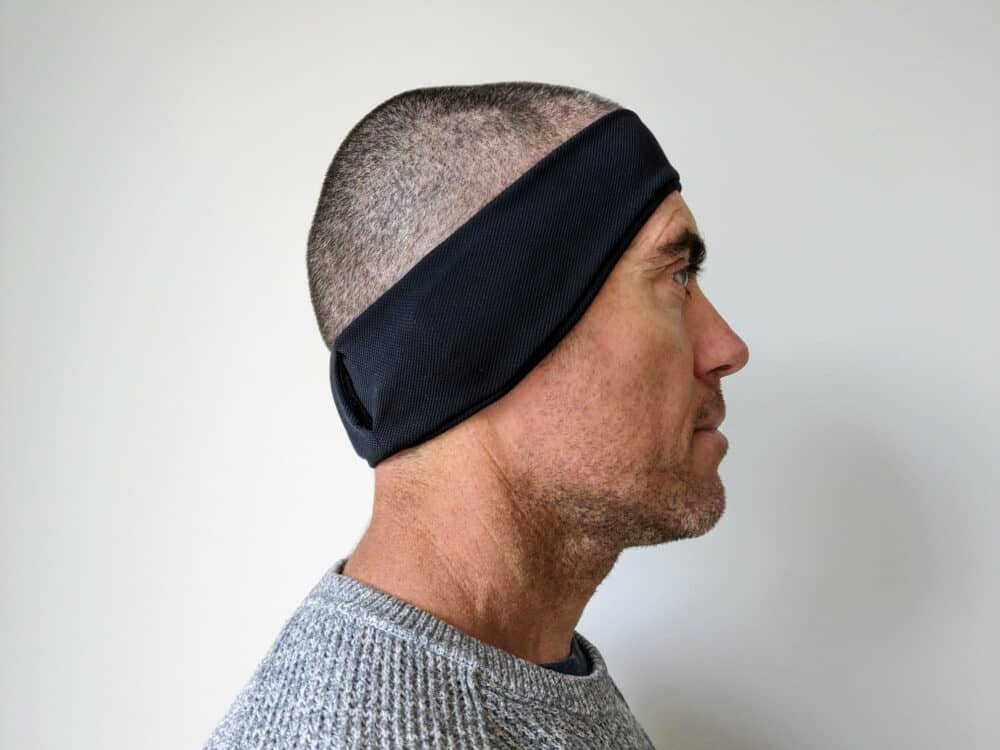
I remembered the wired version of this headband being comfortable to wear to bed in the past, but I wasn’t sure how much difference the Bluetooth module would make. As it turns out, the answer was: not much.
The manual suggested wearing the headband with the logo tag at the back rather than the front like you’d expect: you can put it on either way, but the speakers fitted more naturally over my ears when I followed the instructions.
Wearing the band that way also meant the module was tucked away behind my head, ideal for side/front sleepers like me since there’s no chance of lying on it while moving around in the night. It’s a different story if you sleep on your back, of course: you’ll want to reverse the band in that case.
My head is on the larger side of average, and the medium band fitted well, firmly staying in place even as I tossed and turned during the night. It was comically huge on my girlfriend’s head, however: you’ll definitely want to drop down to a small if your noggin isn’t as big as mine.
Getting the speakers into the right position takes a bit of experimentation, but it’s really only something you need to do when you first get the headband or after washing it. It’s not hard to figure out, at least: I could barely hear the speakers until they were sitting directly over my ear canal.
As with the wired model, I had no problems with comfort. Most earbuds and headphones quickly become painful to lie on, even many of those designed for sleep, but not here. With my head on the pillow, I could barely feel the speakers at all.
I can’t emphasize enough how big of a deal this is for side sleepers. If you can’t wear earbuds to bed because they’re too uncomfortable or fall out in the middle of the night, the SleepPhones (or the Bedphones that I also reviewed recently) are your best alternative.
The only other thing worth mentioning here is that the headband can also function as a sleep mask. With the curtains in my current bedroom seemingly made from tissue paper, this wasn’t a claim that was exactly hard to test.
If you’ve ever used the kind of basic eye mask handed out by airlines, you’ll know what to expect: the SleepPhones block out a similar amount of light. I’ll be sticking with the ridiculous yet effective version I normally use, but in a pinch, pulling the band down over my eyes is a lot better than nothing.
Audio
My expectations for audio quality are much lower from a sleep-focused gadget like this than a normal set of earbuds. Basically, if it’s loud enough to hear in whatever room I’m sleeping in and doesn’t sound bad enough to annoy me, it’s acceptable.
Based on that low bar, audio quality is…well, fine, really. Like the Bedphones and other flat, over-ear headphones I’ve used, there’s not much bass on offer, and music sounds pretty thin, but I’m not frustrated by it when I’m trying to sleep.
They’re plenty loud enough as well, but like I said, you really do need to make sure the speakers are sitting in the right place. When they weren’t sitting directly over my ear canal, the volume dropped off dramatically.
I’d never use the SleepPhones as my daily headphones (and not just because it’s not the 70’s and I don’t typically walk around all day wearing a headband), but for their intended purpose, the audio is good enough.
The elephant in the (bed)room here is the absence of any noise isolation or cancelation. As I always say when reviewing these kinds of devices, they only work well when you’re sleeping in a fairly quiet room. Snorers, traffic, the nightclub down the road: you’ll hear it all until you turn the volume up so high that you won’t be sleeping anyway.
If you don’t need to block out the world and just want to fall asleep to music or podcasts without disturbing your partner, this won’t be a problem. When you need a bit of help keeping the sounds of the city out, however, I’d be looking elsewhere.
Battery and Charging
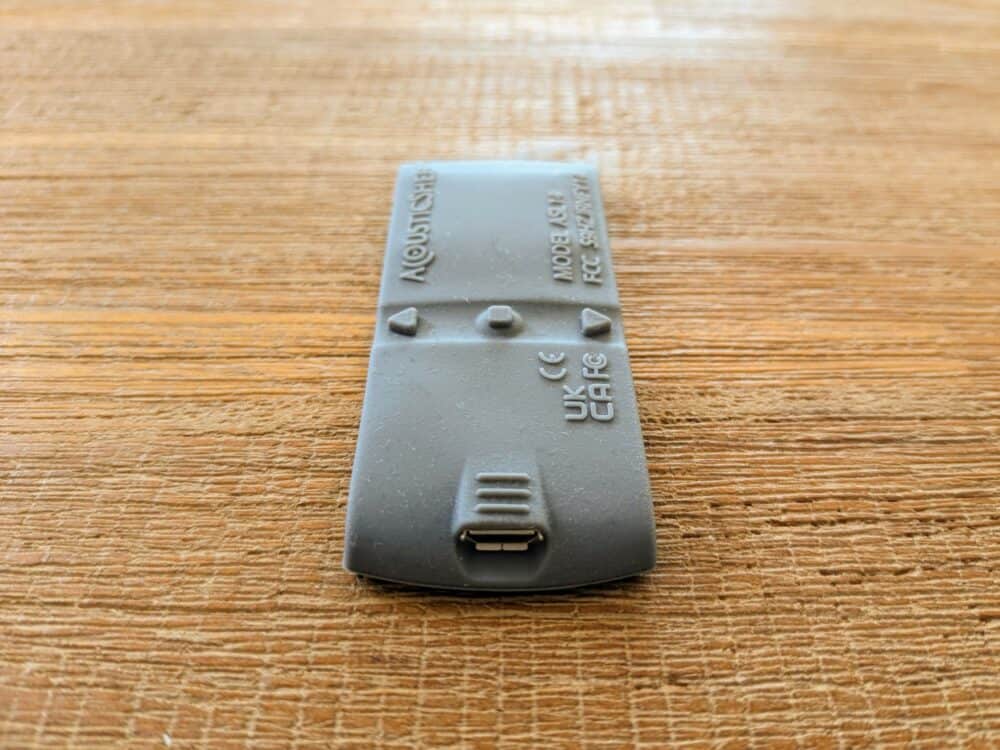
I was a bit surprised by the battery life claims for the SleepPhones: 24 hours is substantially more than you’ll get from Bluetooth wireless earbuds, for instance, and closer to what I expect from many full-size headphones.
Looking at the size of the module, though, that claim seemed more plausible. I couldn’t find a spec sheet that lists the capacity, but there’s definitely a lot more space for a battery than you get inside a tiny earbud.
Sure enough, I got surprisingly close to an entire day’s worth of listening from the SleepPhones. To test, I streamed music at a low-ish volume for seven hours while working one day, a podcast on repeat for another eight hours overnight, and then seven hours of music again the following day until the battery finally gave out.
With that in mind, while the manufacturer recommends charging after each use to preserve battery longevity, you don’t have to. Once every couple of days is enough, and you might even be able to stretch it to a third if you’re lucky. Impressive.
Less impressive, however, is the presence of a micro-USB socket. In a world that’s moved almost entirely to USB C or wireless charging, needing a different kind of charger and cable is annoying. That’s true when I’m at home, and even more so when I’m on the road.
The one benefit of using micro-USB, I guess, is that even the oldest laptop or wall charger can put out the measly five watts required: you can finally dust off that ancient iPhone charger that’s been sitting in a drawer for the last five years. It took just under four hours to charge from empty to full.
Get regular updates from the world of travel tech and remote work
News, reviews, recommendations and more, from here and around the web
Verdict
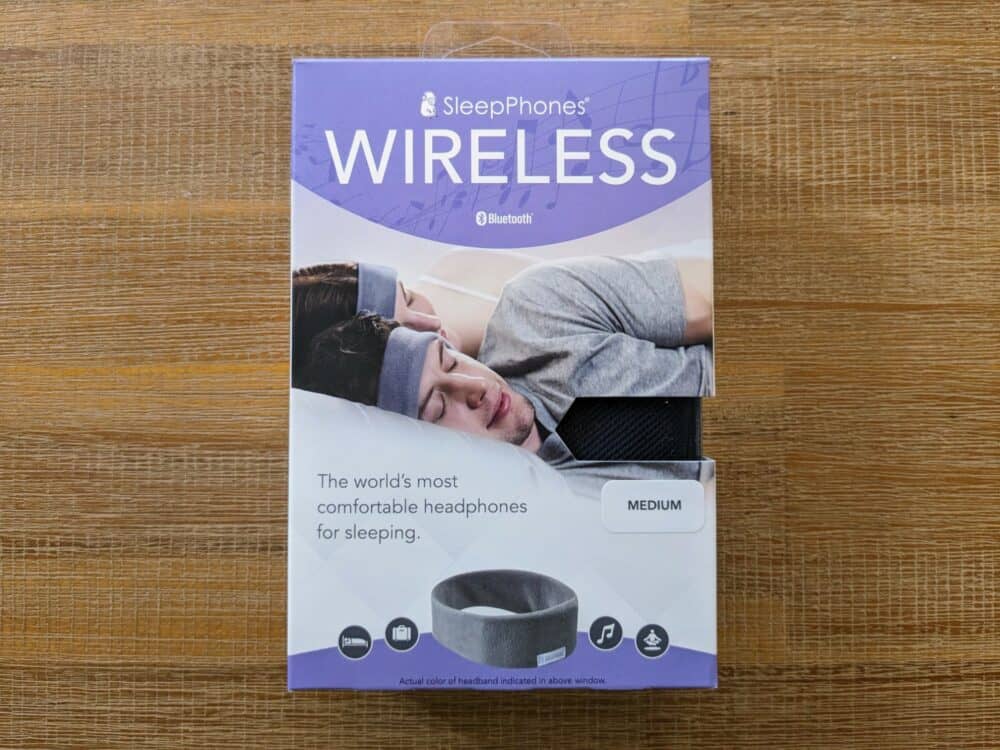
The Bluetooth version of AcousticSheep’s SleepPhones is a marked improvement over the wired model. The lack of a cable makes it both less annoying to wear and more durable, and the battery life is long enough that there’s still no problem playing music or podcasts all night.
Even the breathable version of the headband material is soft and comfortable to lie on, as are the speakers inside it. You’ll need to fuss around slightly to get them perfectly aligned with your ears, but they don’t move around much after that.
Volume levels and sound quality are fine for the intended purpose, and being able to pull the headband down over my eyes to cut out some of the light in a bright room is useful in a pinch. I’d have preferred to see a USB C charging socket instead of micro-USB, but it’s not the end of the world.
The only issue, then, is one that’s common to all over-ear sleep headphones: they block out almost no outside sound. If you have a snoring partner or noisy neighbors, that’s a problem: good luck sleeping by the time the volume is loud enough to drown them out.
Even so, for side sleepers or those who can’t stand having anything in their ears, SleepPhones remain one of the most comfortable ways of listening to something other than your inner monologue as you drift off. Just make sure you’re in a quiet room when you do it.
Pros
Cons
All images via author

